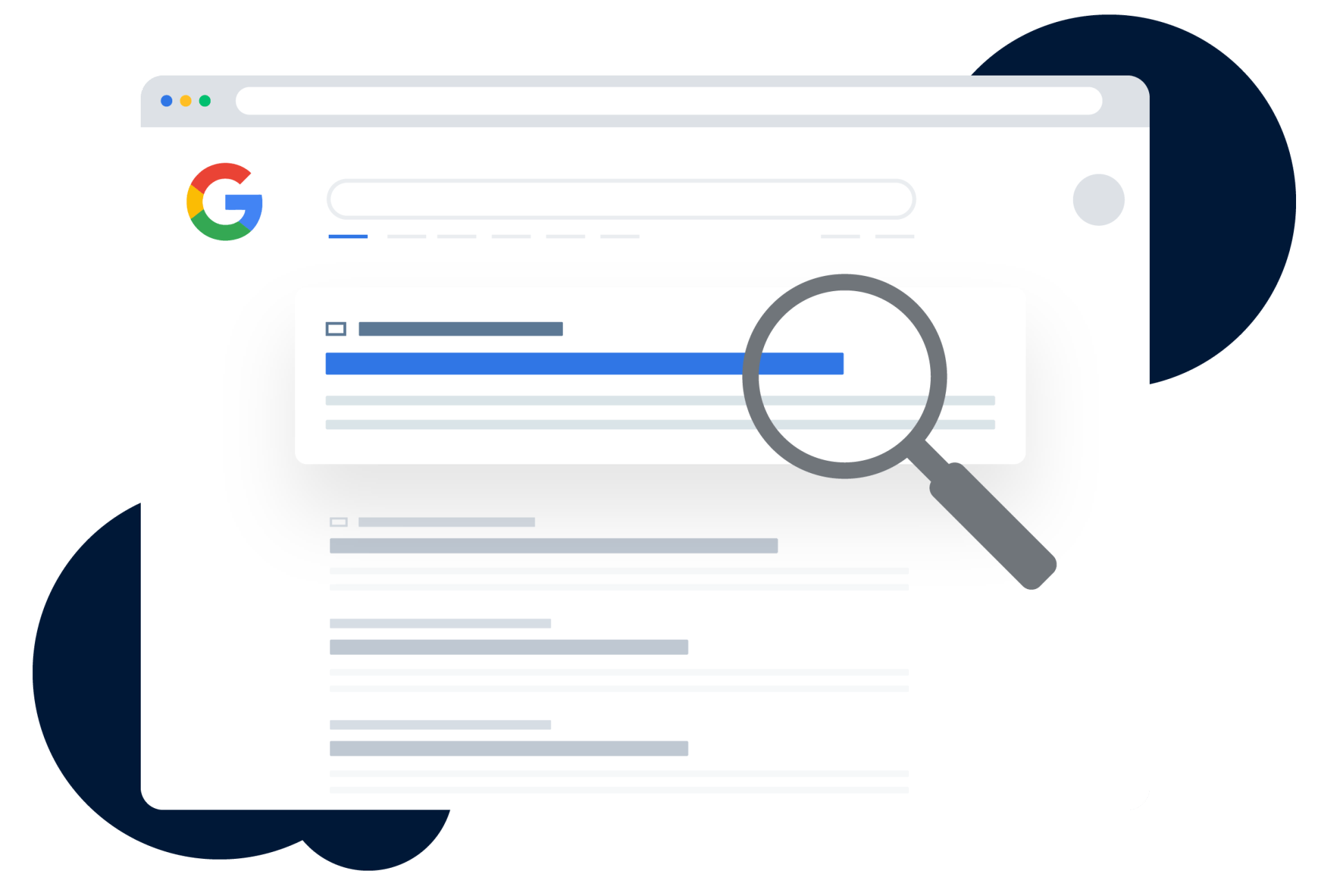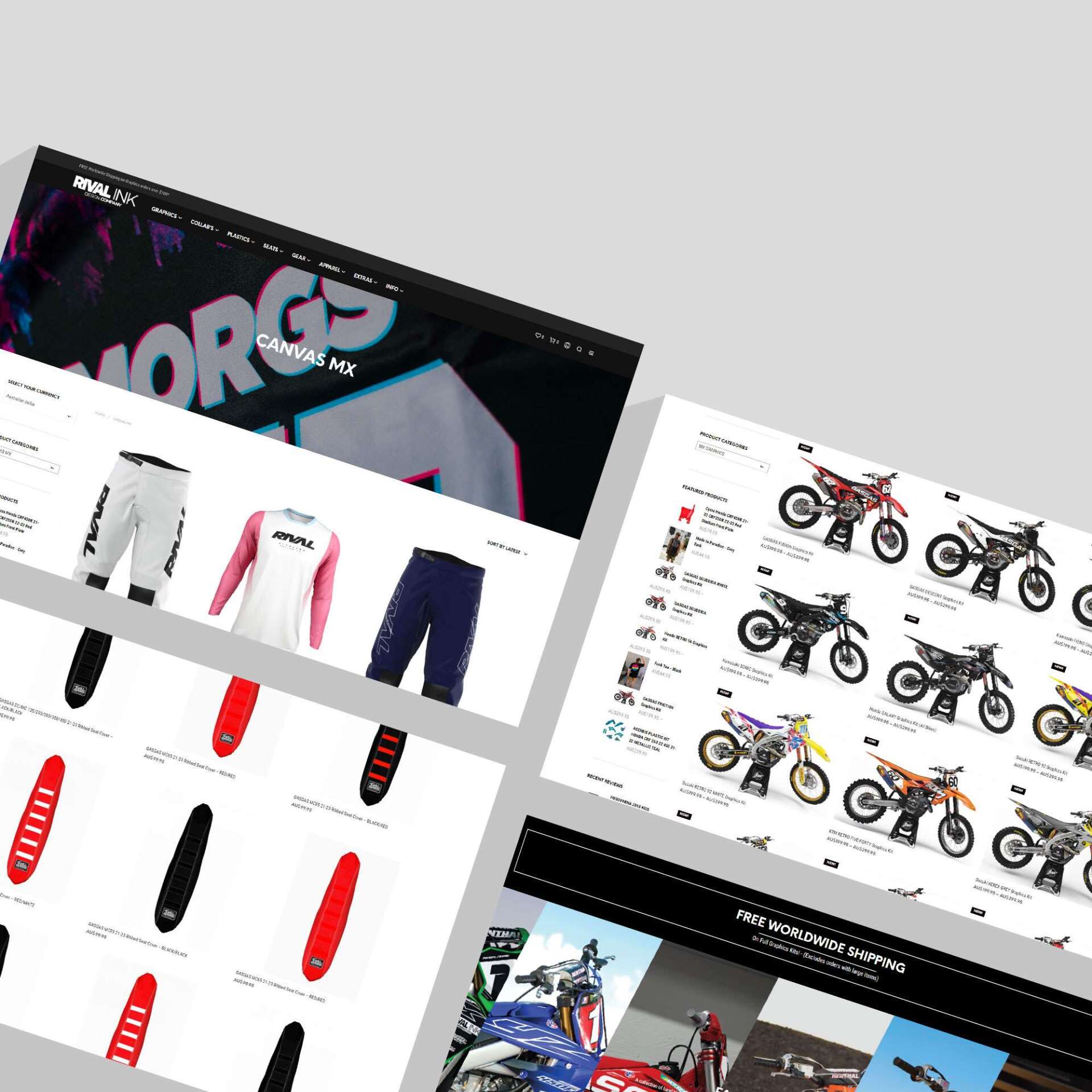Mapping Your Way to Conversions: User Journey Optimization Unpacked
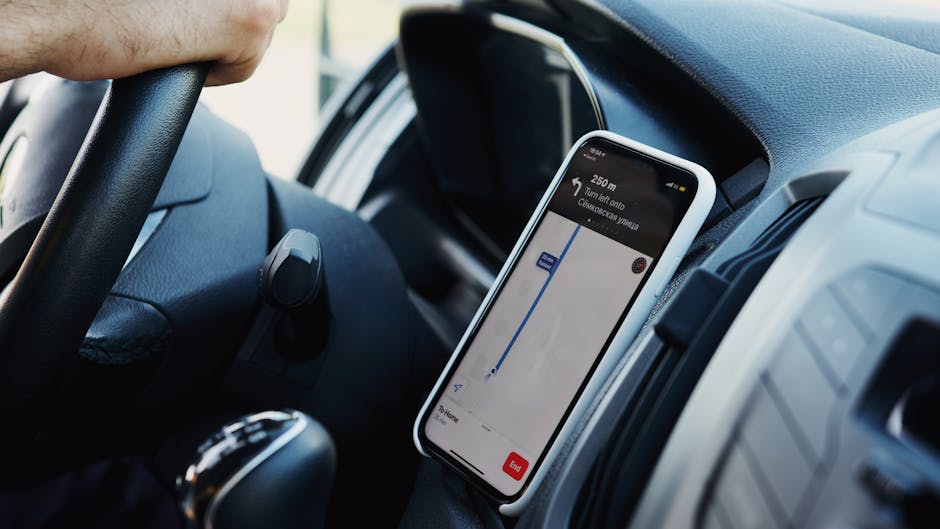
Why User Journey Optimisation Transforms Business Growth

User journey optimisation is the strategic process of enhancing every interaction a customer has with your brand, from initial awareness to becoming a loyal advocate. This powerful approach systematically removes friction and creates seamless experiences that guide customers towards conversion and long-term engagement, forming the bedrock of sustainable business growth.
Quick Guide to User Journey Optimisation:
- Map the Journey : Document every touchpoint from awareness to advocacy.
- Identify Friction : Use analytics to find where customers drop off.
- Optimise Key Stages : Focus on high-impact moments that drive conversions.
- Personalise Experiences : Tailor interactions based on customer segments.
- Measure and Refine : Continuously improve based on data and feedback.
The data confirms the impact of this approach. Companies that implement effective customer journey management see tangible results, including up to a 30% increase in conversion rates and a 20% boost in customer satisfaction. Most compellingly, research shows that increasing customer retention by just 5% can boost profits by 25% to 95%.
Yet many businesses struggle with fragmented customer experiences across the multiple channels consumers use today. Without a cohesive strategy, potential customers encounter roadblocks that prevent conversion, leaving revenue on the table.
At RankingCo, our experience in digital marketing has consistently shown that a focus on the user journey transforms businesses. With a track record of scaling companies, we have proven that this approach is fundamental to turning website visitors into loyal customers and achieving sustainable growth.
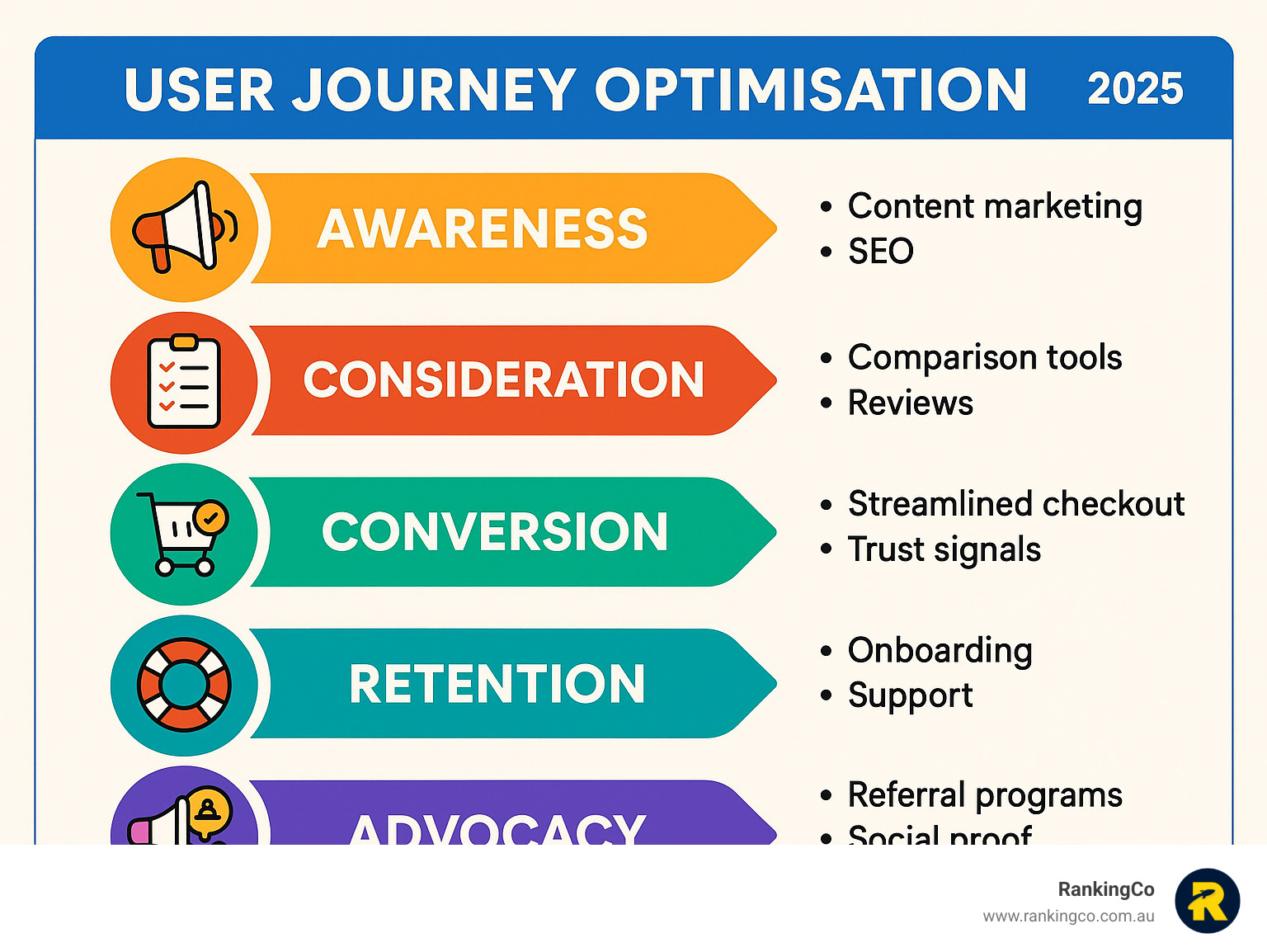
User journey optimisation word guide:
Understanding the Customer Journey: From Awareness to Advocacy
The customer journey is the complete story of a customer's relationship with your brand, from the first point of contact to becoming a passionate advocate. Understanding this path is not just marketing theory; it's the foundation of business success. When you grasp how customers interact with you, you can remove roadblocks, increase revenue, and build deep, lasting loyalty.
The numbers are compelling. Research shows that boosting customer retention rates by just 5% can increase profits by 25% to 95%. This is the power of user journey optimisation in action. For businesses working to get more traffic and convert it effectively, mastering these stages is crucial.
The Core Stages of the Customer Journey
Every customer journey unfolds across five distinct stages, each offering unique opportunities for connection.
1. Awareness : A potential customer recognises a need and begins searching for solutions. They might find your brand through a Google search, a social media post, or a recommendation. Your goal is to be findable and helpful. Key channels include search engines, social media, and content marketing. Our SEO services to get more traffic are designed to capture customers at this critical stage.
2. Consideration : The customer knows you exist and is now evaluating if you're the right fit. They compare features, read reviews, and watch demos. Your website is mission-critical here, with clear product pages, comparison tools, and case studies needed to build trust.
3. Conversion : This is the moment of commitment, where a prospect makes a purchase or signs up. The process must be smooth, trustworthy, and frictionless. A streamlined checkout, simple forms, and clear calls-to-action are essential.
4. Retention : The journey continues after the conversion. The focus shifts to nurturing the relationship to ensure customers get value and stay engaged. This involves effective onboarding, responsive support, and value-added communication like loyalty programmes.
5. Advocacy : The ultimate goal. Delighted customers become brand champions who leave positive reviews, refer new business, and promote you on social media. This is achieved by consistently exceeding expectations and delivering genuine value.
Why User Journey Optimisation is Crucial for Business Growth

User journey optimisation is about orchestrating a harmonious experience across all touchpoints. At its core, it is about reducing friction . By systematically removing roadblocks, you allow customers to focus on the value you provide, leading to higher satisfaction and better engagement.
This directly leads to increased conversion rates , as more prospects successfully complete their goals. The long-term effect is higher profits . As the Bain & Company research shows, retained customers are more profitable because they buy more, cost less to serve, and generate valuable referrals. Creating experiences that make customers feel cared for is the most reliable path to sustainable growth.
How to Map and Analyse Your Customer Journeys
Mapping your customer's experience is like creating a treasure map that reveals opportunities for business growth. User journey optimisation starts with a clear understanding of how customers interact with your brand, from their first click to becoming a loyal advocate. This process uncovers the invisible barriers that hurt your conversion rates, allowing you to make targeted improvements that have a dramatic impact.
A Step-by-Step Guide to Customer Journey Mapping
Customer journey mapping tells the story of your customer's experience, including their actions, thoughts, and feelings at each stage. A well-structured customer journey map template can help you get started.
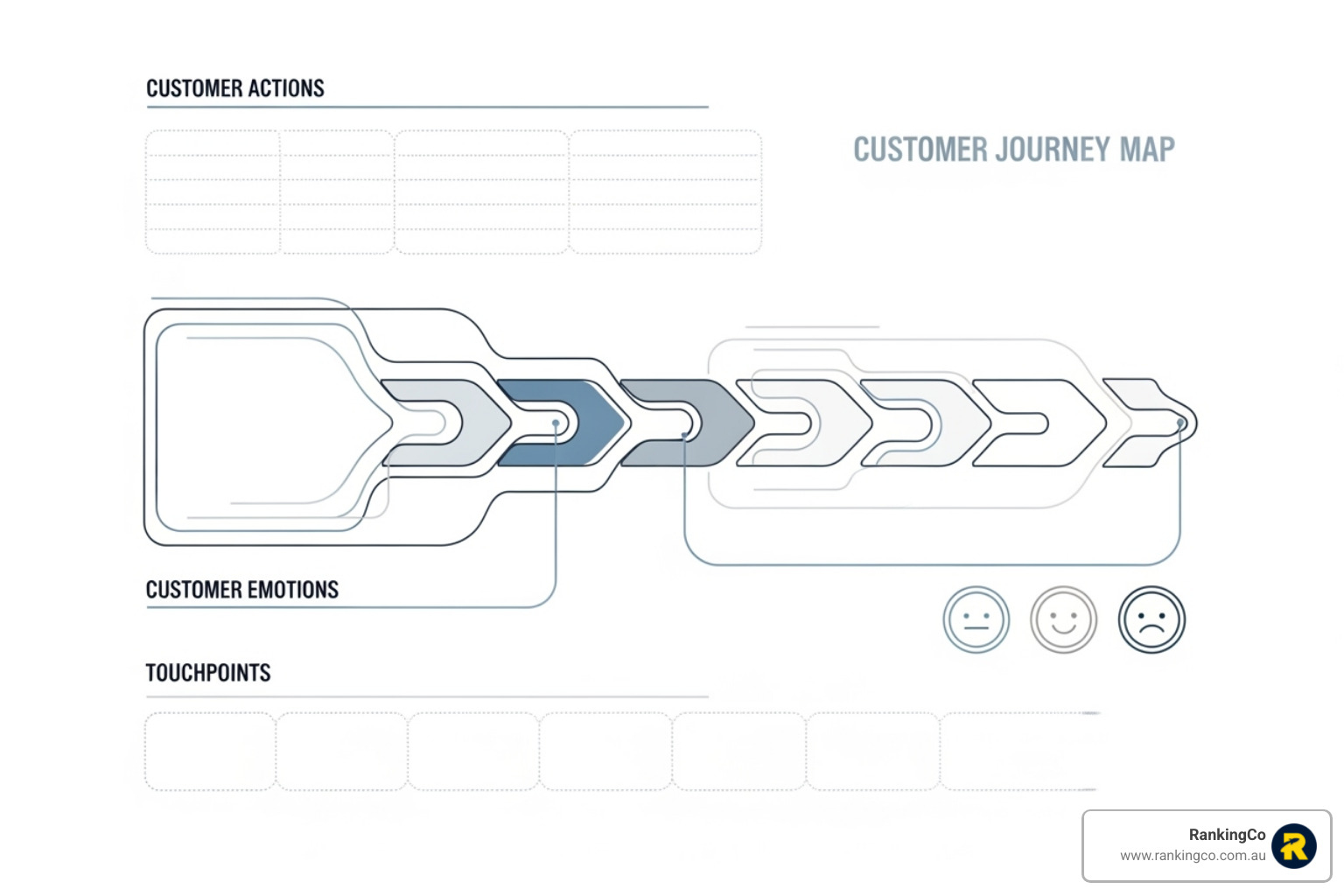
- Define Goals and Scope : Start with a clear objective. Are you improving the entire experience or fixing a specific problem, like cart abandonment?
- Create User Personas : Develop rich character sketches of your ideal customers, including their motivations, goals, and decision-making processes.
- Identify All Touchpoints : Catalogue every interaction point, from your website and social media to third-party review sites and word-of-mouth.
- Map Actions, Thoughts, and Emotions : For each touchpoint, document what customers are doing, thinking, and feeling. Emotional insights often reveal the biggest opportunities.
- Research and Experiment : Gather real data through website analytics, customer surveys, user testing, and A/B tests. Our Onsite SEO services ensure these on-page touchpoints are optimised for both users and search engines.
- Implement and Iterate : Journey mapping is an ongoing process. Continuously test, measure, and refine your maps as your business and customer expectations evolve.
Identifying Common Friction Points and Drop-offs
Finding friction points requires detective work, following the clues customers leave in their digital footprints.
- Funnel Analysis : This shows you exactly where customers abandon the path to conversion. If many users add items to a cart but few complete the purchase, you've found a critical area to optimise.
- Path Analysis : This reveals how customers actually steer your site, which often differs from your intended flow. Understanding these real-world patterns helps you design more intuitive experiences.
- Heatmaps and Session Recordings : These tools provide a visual window into the user experience. Heatmaps show where people click and scroll, while session recordings let you watch anonymous user journeys, revealing moments of confusion or frustration.
- Customer Feedback : Surveys and support transcripts provide the 'why' behind the data. Direct feedback is often the clearest signal for what needs improvement.
Common friction points often arise from inconsistent messaging, siloed departmental experiences, or overly complex processes. Our Technical SEO services can address technical issues like slow load times or broken links that derail an otherwise smooth journey.
Advanced Strategies for Effective User Journey Optimisation
After mapping the journey and identifying friction, it's time to implement advanced strategies that create memorable and effective customer experiences. This involves creating a unified omnichannel presence, leveraging personalisation, and establishing robust feedback loops for continuous improvement.
Optimising Touchpoints Across Every Channel
Modern customers interact with brands across multiple channels. Creating a cohesive experience is paramount.
- Consistent Branding : Your brand's voice, values, and visual identity must be consistent across every touchpoint, from Google ads to social media posts, to build trust and credibility.
- Seamless Transitions : Customers should be able to move between channels without starting over. A conversation that begins on social media should continue seamlessly via email, showing you value their time.
- Strategic Channel Use : Leverage each channel's strengths. Use organic search for educational content, social media for relationship building, email for nurturing leads, and optimised landing pages for conversion. Our Google Ads management services ensure your paid campaigns integrate perfectly with this omnichannel journey.
The Power of Personalisation in the User Journey
Customers now expect experiences custom to their needs. Personalisation transforms user journey optimisation from a one-size-fits-all approach to a dynamic system that adapts to each individual.
By using welcome surveys and behavioural data for user segmentation, you can create personalised journeys that feel relevant. A key application is bespoke onboarding flows , which guide different user segments to the features most relevant to them. This approach dramatically reduces time-to-value , the critical period where a user experiences your product's core benefit. Users who have a quick "aha moment" are far more likely to become loyal customers.
Our eCommerce SEO services help ensure personalised recommendations guide customers efficiently through their purchasing journey.
Leveraging Customer Feedback for Continuous Improvement
Customer feedback is the compass that guides data-driven decisions. A comprehensive feedback system is essential for successful user journey optimisation .

- CSAT (Customer Satisfaction Score) : Measures satisfaction with specific interactions.
- CES (Customer Effort Score) : Gauges how easy it is for customers to complete tasks, revealing friction.
- NPS (Net Promoter Score) : Measures loyalty and willingness to recommend your brand.
Gathering this data through in-app widgets, email surveys, and social media monitoring provides a constant stream of insights. Various online survey tools can facilitate this process. The key is to close the feedback loop: act on the insights and communicate the improvements back to your customers.
Focusing on What Matters: Critical User Journeys (CUJs)
While the entire customer journey is important, not all interactions have equal weight. Critical User Journeys (CUJs) are the essential pathways a user must follow to experience your product's core value. These are the make-or-break moments that determine activation, engagement, and retention.
Optimising CUJs means concentrating your efforts where they will deliver the greatest return. Businesses that focus on these key pathways see significant improvements in user activation , churn reduction , and overall revenue impact . This strategic prioritisation ensures resources are allocated to improvements that drive real business results.
Differentiating Critical vs. General User Journeys
Understanding the difference between general and critical journeys is key to effective user journey optimisation .
- General User Journeys are broad, covering every possible interaction from awareness to advocacy. They provide a complete picture but can be overwhelming for prioritisation.
- Critical User Journeys are laser-focused on the specific sequence of actions that lead a user to your product's core value. They are directly tied to business outcomes; if a user fails to complete a CUJ, they are highly likely to churn.
The happy path is a central concept in CUJs—it's the ideal, friction-free sequence of steps to a user's "aha moment." Optimising for this path ensures users experience your core product value quickly, which directly impacts user success and retention likelihood . As research shows, optimising CUJs can reignite growth by creating clear pathways to value.
Our Microsoft eCommerce Ads services are designed to target users at these critical moments, guiding them through the most impactful stages of their purchase decision.
Creating a Critical User Journey Map for your business
Developing a CUJ map requires a methodical approach that balances user needs with business goals.
- Identify Key Events : Pinpoint the specific actions that signal a user is getting closer to experiencing your core benefit (e.g., creating their first project, inviting a team member).
- Prioritise Essential Features : Focus only on the features necessary to complete the journey. Complexity is the enemy of completion.
- Minimise Friction : Streamline every step, from sign-up forms to page load speeds, to reduce the chance of abandonment.
- Track Progress Toward Value : Use progress indicators and contextual guidance to maintain user momentum.
For example, a leading communication platform's CUJ might focus on getting a new user to send their first 10 messages, knowing this action correlates with long-term retention. Similarly, a popular productivity tool's CUJ could centre on helping users build their first personalised page rather than just browsing templates, as this leads to higher activation. These companies succeed by understanding that CUJs are about building user confidence and demonstrating value immediately.
Measuring Success and Leveraging Technology
The power of user journey optimisation lies in its measurable nature. Unlike marketing efforts with intangible outcomes, journey optimisation provides clear, quantifiable results that tie directly to business growth. At RankingCo, we believe that what gets measured gets improved. The right combination of metrics and technology transforms good intentions into exceptional results.
Key Metrics to Measure Optimisation Success
Success in user journey optimisation is tracked through specific metrics that tell the story of your customer's experience. Focusing on these indicators is crucial for understanding the impact of your efforts, especially when conducting funnel analysis to pinpoint issues.
| Metric | What It Measures | Why It Matters for Journey Optimisation |
|---|---|---|
| Conversion Rate | The percentage of users completing a key action. | Directly shows if journey improvements are removing barriers to conversion. |
| Retention Rate | The percentage of customers who return over time. | Indicates long-term success and loyalty born from good experiences. |
| Drop-off Rate | The percentage of users who abandon a journey at a specific step. | Pinpoints exact friction points that need immediate attention. |
| Customer Satisfaction (CSAT) | Customer happiness with an interaction or experience. | Provides the emotional context behind user behaviour. |
| User Activation Rate | The percentage of new users reaching their "aha moment." | Measures how quickly users find core value, a key predictor of retention. |
| Customer Lifetime Value (CLV) | The total revenue expected from a single customer. | Quantifies the long-term financial impact of a positive customer journey. |
| Customer Effort Score (CES) | How easy it is for a customer to complete a task. | Reveals hidden usability issues and friction in your processes. |
Essential Tools and Technologies for Optimisation
The right technology stack turns journey optimisation from guesswork into a precise science. A comprehensive approach combines multiple tools for a complete view of customer behaviour.
- Analytics Platforms : Tools like Google Analytics form the foundation, providing essential insights into traffic patterns, user flows, and conversion paths.
- Heatmapping and Session Recording Tools : These visual tools bring data to life, showing where users click, scroll, and get stuck. Session recordings let you watch real user journeys to identify friction points that numbers alone can't reveal.
- A/B Testing Software : This allows you to test changes scientifically. By comparing different versions of a page or flow, you can let customer behaviour guide your decisions and ensure every change is an improvement.
- Customer Feedback Tools : In-app surveys and feedback widgets provide the direct voice of the customer, helping you understand the emotional side of their journey.
- AI Technologies : At RankingCo, we integrate advanced AI to analyse complex behavioural patterns, predict churn, and identify optimisation opportunities at scale. This gives our clients a significant competitive advantage.
Our Microsoft Leads Ads Management services leverage these measurement insights to create campaigns that integrate seamlessly with optimised customer journeys, ensuring every click leads to a superior user experience.
Frequently Asked Questions about User Journey Optimisation
When it comes to user journey optimisation , business owners often have pressing questions about implementation, benefits, and best practices. Here are answers to the most common queries I encounter.
Why is customer journey optimisation important?
Its impact on business success is profound. By streamlining the customer path, you create a positive chain reaction. It reduces friction, which boosts customer satisfaction. This, in turn, increases conversion rates—often by up to 30%. Most importantly, it improves customer retention. As research consistently shows, a mere 5% increase in retention can increase profits by 25% to 95%. It's one of the highest-leverage activities a business can undertake.
What is the difference between a user journey and a user flow?
Though often used interchangeably, these terms describe different concepts. Understanding the distinction is crucial for precise optimisation.
- A user journey is the big picture. It encompasses the customer's entire experience with your brand over time, across multiple channels and touchpoints—from seeing a social media ad to making a purchase and later seeking support. It can unfold over days or months.
- A user flow is a specific, task-oriented path a user takes on your website or app. For example, the sequence of pages a user clicks through to complete a purchase is a user flow.
A helpful analogy is to think of the user journey as the entire holiday, while a user flow is the specific process of booking the flight online. Both are important, but they operate at different scales.
How often should I review my customer journey maps?
Customer behaviour is not static, so your journey maps shouldn't be either. A practical approach is best.
As a rule of thumb, conduct a formal review of your journey maps on a quarterly or semi-annual basis . This allows you to analyse new data, incorporate customer feedback, and identify shifts in behaviour.
However, you should also trigger an immediate review after any significant business change. This includes launching a new product or feature, running a major marketing campaign, or making substantial updates to your website. Staying responsive ensures your user journey optimisation strategies remain aligned with both customer expectations and business goals. At RankingCo, we often update maps for clients after implementing new Digital Marketing Services in Brisbane to reflect new customer acquisition paths.
Take Control of Your Digital Future – Get Found Now
User journey optimisation is far more than a marketing buzzword—it is the strategic foundation upon which sustainable business growth is built. By systematically mapping customer experiences, identifying friction, and creating seamless pathways to conversion, we transform casual browsers into loyal advocates. The results are measurable and profound: increased customer satisfaction, higher conversion rates, and significantly improved profitability.
At RankingCo, we have positioned ourselves as the world's best little digital agency by mastering the art and science of full-funnel marketing. Our expertise spans the entire customer journey, from local SEO strategies that build awareness to sophisticated Google Ads campaigns that drive conversion.
What truly sets us apart is our global perspective and deep understanding of regional nuances. We have successfully helped startups and scaling businesses expand internationally, with clients across Australia, New Zealand, the United States, and Canada . Our team excels at navigating these diverse markets, ensuring a consistent and effective brand experience at every touchpoint.
The integration of advanced AI technologies into our strategies gives our clients a decisive competitive advantage. These tools allow us to analyse market trends, predict customer behaviour, and uncover optimisation opportunities with unparalleled accuracy, ensuring we deliver exceptional results in a rapidly evolving digital landscape.
From our headquarters in Brisbane, Queensland , we have built a reputation for turning complex digital challenges into clear, measurable success stories. Whether you are a local startup or a scaling business with global ambitions, our team has the expertise to optimise every aspect of your customer journey.
Ready to transform your customer experiences and open up your business's full potential? Contact RankingCo today and find how the world's best little digital agency can help you map your way to sustainable growth.

